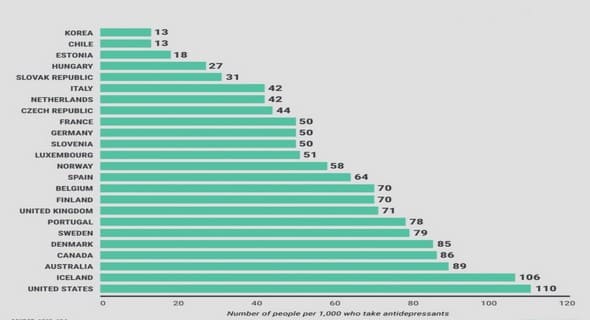(Downloads - 0)
For more info about our services contact : help@bestpfe.com
Table of contents
PART I: THEORETICAL DESCRIPTION OF NATURAL AND ARTIFICIAL RECHARGE IN FRACTURED CRYSTALLINE ROCK
Introduction
Groundwater resources in fractured crystalline rock
1. Geography of fractured crystalline rocks
2. Geology of fractured crystalline rocks
2.1. Definition
2.2. Crystalline rock fracturing
2.3. Weathering profile
3. Multi-scale heterogeneity
3.1. Fracture heterogeneity (micro to macro)
3.2. Landscape scale heterogeneities (macro)
4. Aquifer conceptualization
Chapter 2 Aquifer recharge and the water cycle
1. The water cycle
1.1. Generalities
1.2. The “Water Budget Myth”
2. Components of the water cycle
2.1. Precipitation
2.2. Evapotranspiration
2.3. Runoff
2.4. Infiltration and the vadose zone
2.5. The role of aquifers in the water cycle
3. Aquifer recharge
3.1. Definition
3.2. Types of recharge
3.3. Recharge controls
3.4. Global recharge distribution
Chapter 3 Quantitative evaluation of recharge processes
1. The basic water-balance equation
2. Recharge estimation methods
2.1. Recharge from infiltration RI (direct recharge)
2.2. Recharge from surface-water RSW (indirect recharge)
2.3. Total recharge (RI +RSW)
2.4. Choosing the appropriate technique
3. Remaining challenges in estimating recharge
3.1. The variability of recharge in time and space
3.2. The assessment of localized and indirect recharge
Humid versus arid regions
3.4. Recharge in fractured rock
Research problem
Chapter 4 Managed Aquifer Recharge
1. Generalities
1.1. Definition
1.2. Key issues
2. MAR methods
2.1. Types of methods
2.2. Types of structures
3. Factors determining the effectiveness of MAR
3.1. Hydrological criteria
3.2. Hydrogeological criteria
4. MAR challenges and risks
4.1. Decrease in infiltration potential
4.2. Contamination of groundwater
4.3. Watershed scale impacts
5. Predicting and assessing MAR efficacy
5.1. Soil maps and hydrogeological reports
5.2. Field methods
5.3. Modeling the aquifer response to MAR
5.4. Monitoring infiltration and groundwater mounding
6. MAR in fractured crystalline rock
7. Watershed development and MAR in India
7.1. National scale
7.2. Telangana state-scale: Mission Kakatiya
Research problem
PART II: EXPERIMENTAL AND NUMERICAL INVESTIGATIONS OF NATURAL AND ARTIFICIAL RECHARGE IN FRACTURED CRYSTALLINE ROCK
Chapter 5 Natural recharge heterogeneity in weathered fractured crystalline rock
1. Introduction
2. Study site
2.1. General
2.2. Geological setting
2.3. Hydrological setting
2.4. Soil types
2.5. Land use
2.6. Reference recharge
3. Methodology
3.1. Hydraulic model
3.2. Basin discretization
3.3. Sensitivity analysis
4. Results and discussion
4.1. Threshold runoff
4.2. Diffuse recharge distribution
4.3. Diffuse recharge/rainfall relationship
Annual groundwater budget
4.5. Focused recharge
4.6. Sensitivity analysis of the diffuse recharge model
4.7. Conclusion
Chapter 6 Managed Aquifer Recharge in fractured crystalline rock aquifers
1. Introduction
2. Study site
2.1. Geological setting
2.2. Hydrological setting
2.3. Water level variations in response to recharge
3. Methods
3.1. Estimating infiltration rates and vertical hydraulic conductivity
3.2. Modeling the aquifer response to infiltration
3.2.1. Analytical solutions
3.2.2. Numerical modeling for connected basin
4. Results
4.1. Infiltration estimation and relative contributions
4.2. Vertical hydraulic conductivity
4.3. Horizontal hydraulic conductivity and storativity
4.4. Effect of bedrock relief (numerical model)
4.4.1. Synthetic scenarios
4.4.2. Application to the present field case
5. Discussion
5.1. Representativity of hydraulic parameters
5.2. Comparison to inferred interface relief
5.3. Artificial recharge modeling
6. Conclusions
Acknowledgments
Chapter 7 Conclusions & perspectives
1. Conclusions
1.1. Catchment-scale natural recharge processes
1.2. Site-scale artificial recharge processes
2. Perspectives
2.1. Remote sensing and airborne geophysics
2.2. Recharge quantification
2.3. On the representativity of site-scale analysis
2.4. Effects of MAR on groundwater quality
References




